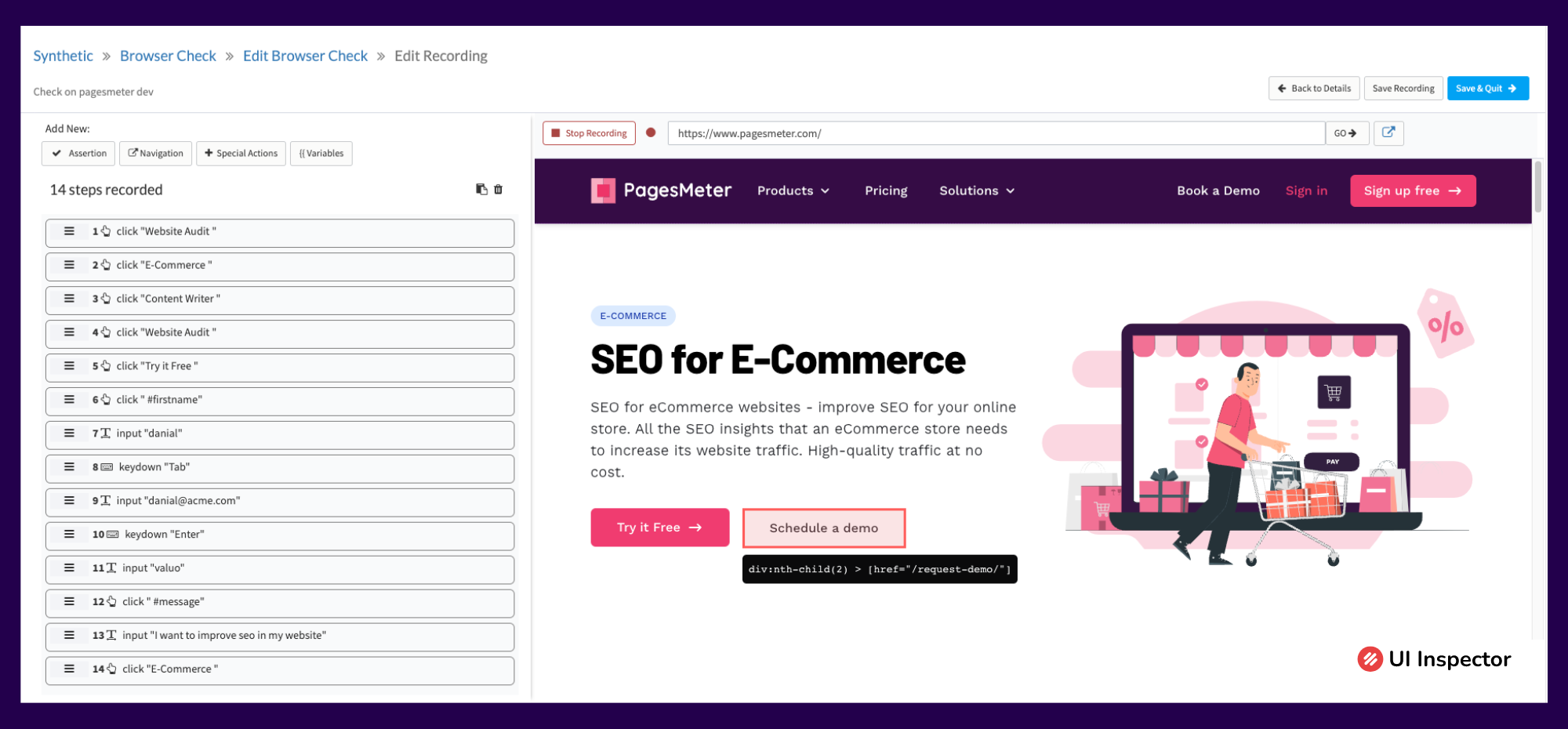As a developer or a QA technician, it is always their responsibility to constantly build and improvise the software or website. To fill these requirements they use various types of tools and testing methods.
Software testing is an integral part of the software development cycle. From the initial stage to inspection, the testing process has to be carried out regularly to make changes whenever necessary.
We all know that companies and organizations use various tracking elements like cookies, beacons, etc, to track the user experience. Likewise, certain trackers or elements are used to test the functionality of your digital product.
Key Performance Indicators or KPIs are indicators used by the QA team to evaluate the functioning of the website or software. In this article, we will look at all the details related to the KPIs.
Table of Content
What are KPIs?
To measure the performance, quality, or other parameters of the website, there is a need for certain quantifiable elements. The quantifiable elements used in software testing are called Key Performance Indicators (KPIs).
It is considered key performance indicators are measurable elements that enable you to evaluate if a website or software performs efficiently and effectively. Not just for performance these indicators can also be used for financial metrics, but the main goal is to improve customer satisfaction.
A Key Performance Indicator measures various variables, such as performance, success rate, and financial parameters, such as profit, net value, and revenue. It also considers user experience, customer retention, and overall website efficiency.
Types of KPIs
The use of KPIs varies from place to place based on the requirement of the organization. But most KPIs fall under four categories,

1. Strategic KPIs
The KPIs used for high-end applications are under strategic KPIs. These included metrics that help evaluate the website's or software's overall functioning. A clear and detailed report of the application’s functioning can be obtained from strategic KPIs.
Strategic KPIs also give specific information about the query we need. It is optional that strategic KPIs need to be monitored every day, this can be evaluated when the desired destination is achieved.
2. Operational KPIs
The strategic KPIs are not monitored daily; therefore the operational KPIs are used to track the software's performance on a day-to-day basis. Operational KPIs can be measured once a month or every day based on the requirement of the organization.
Operational KPIs are also used based on the analysis data derived from strategic KPIs. This type is used to monitor every detail like the processes involved in software, various features, geographical location, and much more.
3. Functional KPIs
As the name suggests this type of KPI pertains to specific functions and applications in the software. Using this KPI, you can monitor all the activities and functions of just one piece of software.
So when a small defect is found in any application or feature, the functional KPIs can be analyzed first. Since functional KPIs focus on just one part of an organization, they provide high-quality information.
4. Leading/Lagging KPIs
This type of KPI mainly focuses on the quality and nature of the data or information present in the software. In addition to leading and lagging KPIs, changes implemented in the software can also be tested to determine whether they were successful.
KPIs Under Various Categories
The use of KPIs is huge and it is required for every domain and sector. They play different roles and the developers use the KPIs for various reasons to maintain the wholeness of the software and website.

1. Financial KPIs
The finance sector of any company or organization holds a very crucial role. Since the revenue, profit, expenses, taxes, and all accounting procedures need to be focused correctly and no error should occur. So various financial KPIs are used by the organizations,
i). Liquidity ratios:
These ratios are used to assess the company's capabilities and whether it can manage any short-term debt with the assets in its account.
Liquidity ratios = Current assets / Current Liabilitiesii). Profitability ratios:
This measures the company’s performance when its expenses are low but the revenue is high.
Profitability ratio = Profit metric / Revenueiii). Turnover ratios
Turnover ratios measure the functionality of the company, that is how the company can convert its product to revenue in less time. The greater the turnover ratio, the larger the cash flow into the company.
Turnover ratio = Cost of sold goods / Average inventory2. Customer Experience KPIs
The main goal of any software or website is to fulfill the requirements of the users and achieve maximum customer retention and satisfaction. The KPIs that focus on customer experience are listed below,
i). Number of new ticket requests:
This is the number of issues or requests that are claimed by the customers while using the software.
ii). Number of resolved tickets:
The total number of issues that were resolved by the company is recorded by this KPI. The number of new requests should not be more than the number of resolved tickets.
iii). Average resolution time:
This KPI calculates the average time needed to resolve an issue raised by the customer. The lesser the resolution time, the more users are interested in using the software.
Average resolution time = Total resolution time / Total number of resolved requests.iv). Average response time:
The customer often wants to talk with an agent to resolve their query. So the time a customer waits for the customer agent to connect is also a key factor. Customers wish to return to your software only when the average response time is less.
Average response time = Total Time taken to respond / Total number of responses.
v). Customer satisfaction rating:
This is done through the surveys and feedback obtained from the customers. The results obtained are not accurate but can be used to determine the expectations of the customer.
Customer satisfaction rating =( Total number of satisfied customers / Total number of responses ) x 1003. Process performance KPIs
The performance of the software is a crucial metric that is the key to customer satisfaction. Usually, the developers make all changes to improvise the overall performance of the software.
i). Production efficiency:
This KPI is used to analyze how fast the organization can implement a new change to the software. Based on the requests, the developers should act fast and bring features to the software.
Production efficiency = Production time for each stage / Total processing timeii). Total cycle time:
This KPI calculates one entire cycle to start and complete a process. Processes initiated by the company must be completed within a short period of time.
Total cycle time = Net production time / Number of products producediii). Error rate:
The product produced by the company will have many defects and errors. But it is always advisable to have fewer errors. The error rate is the number of defects found in a defined set of products.
Error rate = Total number of errors / Total number of products producediv). Quality rate:
This KPI focuses on the quality of the process and not on the errors that are found. When the quality rate is high, then there isn’t any doubt about the success of the process.
Quality rate = Number of good products / Total number of products4. Marketing KPIs
The extent of marketing for a company determines how far the software or website reaches the customers. Poor marketing will lead to people not knowing about your product, and the success rate will be meager.
i). Website traffic:
This determines the number of users visiting your website daily. When the traffic is more, then your website has reached many people.
ii). Click-through rates:
The number of clicks or features used by the customers also determines the performance of the website. This KPI analyzes the users' clicks and determines the associated problems.
iii). Social media traffic:
Social media are the recent marketing areas, where features share, likes, follows, retweets, and views are analyzed to determine engagement with the product.
Benefits of KPIs
Now that we have seen various places where KPIs are being implemented, its use has got a significant role in the software testing sector.

- These indicators provide an overview of all the activities done by the software over a period of time and on a daily basis.
- KPIs are the main parameter to carry out the software testing process without any difficulties.
- Based on the results of the KPIs, the developer and the QA team can make necessary changes accordingly.
- These KPIs are crucial in understanding the user experience and determining their expectations.
- Analyzing the KPIs is the best way to implement changes and test new processes in your product.
- Key performance indicators lead the way for constant improvement in the overall performance of the software.
Limitation of KPIs
These KPIs also have certain limitations, which are to be considered before moving on with the software testing process,
- There are multiple types of KPIs, and the organization should give huge importance to selecting the right KPI.
- In certain cases, the companies get over-involved in choosing and monitoring the key performance indicator. They forget to look into other indicators, so it is not advisable.
- Due to a large number of KPIs, one domain can interfere with other performance indicators, and this will result in false information or data.
- When too many KPIs are being analyzed at the same time, there may be confusion with the information collected.
- Kep performance indicators may be difficult to analyze, so the data obtained are usually inaccurate.
Conclusion
The software testing team and the developers use various tools and indicators to analyze the performance of the software. Manually observing every process is not practically possible, so it is always efficient to look for alternative options.
Key Performance Indicators are one such tool that is used to find and track all the activities of the website or software. As the name suggests the main goal of this indicator is to take care of the software’s performance.
Choose the right KPIs for your domain or organization and make the software testing process easier with just a few steps. Get started now.
Simplify Testing and Enhance Application Quality
Ui Inspector is a comprehensive testing tool designed to streamline the testing process and elevate the quality of your applications. With its wide range of powerful features, UI Inspector empowers developers and QA teams to efficiently tackle common testing challenges.

Ensure seamless functionality and consistent user experience across multiple browsers. Identify and resolve API issues early in the development process, to reduce the risk of costly failures in production.
Minimize critical bugs that occur in production, and save time, effort, and resources by reducing post-release bug fixes and patches.
Sign up now for UI Inspector's 14-day free trial offer and experience the power of its features to discover limitless possibilities!


